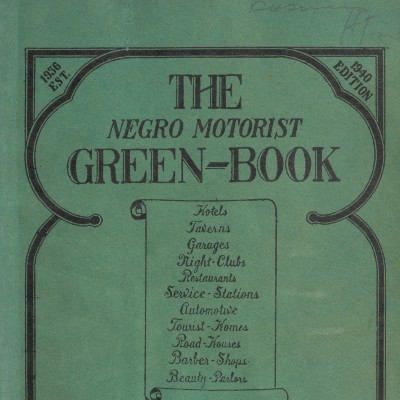The Green Book was created as a guide by and for African Americans to safely find everyday amenities like restaurants, stores, pharmacies, and motels in a time of intense segregation across America. Researching Green Book sites documents the physical legacy of Jim Crow-era segregation and has found over 100 Green Book sites in 26 towns across Maryland.
 Among these Maryland locations in The Green Book is the first-floor apartment of Mrs. Etta Watson that was first listed in 1947. The apartment was located in the Bellevieu-Madison Apartment Building on Bloom Street in Baltimore City. It was not uncommon to offer space in one’s private home in the Green Book. Some tourist homes were larger, private apartments, and some were smaller private areas within an apartment or apartment building.
Among these Maryland locations in The Green Book is the first-floor apartment of Mrs. Etta Watson that was first listed in 1947. The apartment was located in the Bellevieu-Madison Apartment Building on Bloom Street in Baltimore City. It was not uncommon to offer space in one’s private home in the Green Book. Some tourist homes were larger, private apartments, and some were smaller private areas within an apartment or apartment building.
What the Watson tourist home certainly had going for it was its location incredible close to the Colored YMCA and Colored YWCA just down the street. It is known that along with having some rooms of their own, the CYWCA kept a list of women in the area who offered rooms for rent and Watson was likely on that list.
These temporary lodgings in people’s homes became known as tourist homes and they functioned similarly to a simple bed-and-breakfast. Depending on the situation, travelers would likely not to stay at the lodging during the day and relied on it simply for a safe place to sleep, a small meal or a cup of coffee. Tourist homes were listed in just about every corner of the United States in the Green Book; in Maryland, we’ve documented homes in Baltimore City as well as Frederick County.
Etta Watson offered the tourist home for six years, until 1953, as documented in the Green Book. In 1956, she is listed as a beauty operator also on Bloom Street, perhaps operating out of her apartment. The Bellevieu-Madison Apartment Building still stands and is now a senior apartment building.
EXPLORE GREEN BOOK SITES IN MARYLAND
- Introduction to Green Book sites in Maryland
- The CYMCA and the CYWCA in Baltimore City
- The Watson Tourist Home in Baltimore City
- The Harmon Hotel on Jonathan Street in Hagerstown
- The Blue Star Motel and The Blue Jay Hotel in Southern Maryland
- The Makel, Grinage, and Roberts Tourist Homes in Frederick
With assistance and upon the foundational research of Anne Bruder, this post was written by Anthony Plaag in his senior year of an undergraduate degree in Public History with a minor in Religion from Stevenson University. Anthony is interested in the intersections of History and Social Justice and believes history can be used as a tool for the liberation of marginalized and oppressed communities. Along with his writing about The Green Book in Maryland, he will also be assisted with Preservation Maryland’s LGBTQ history project. In his free time, Anthony likes to listen to the sweet stylings of Frank Sinatra, hanging out with friends, and discussing religion, philosophy, politics, and history.
